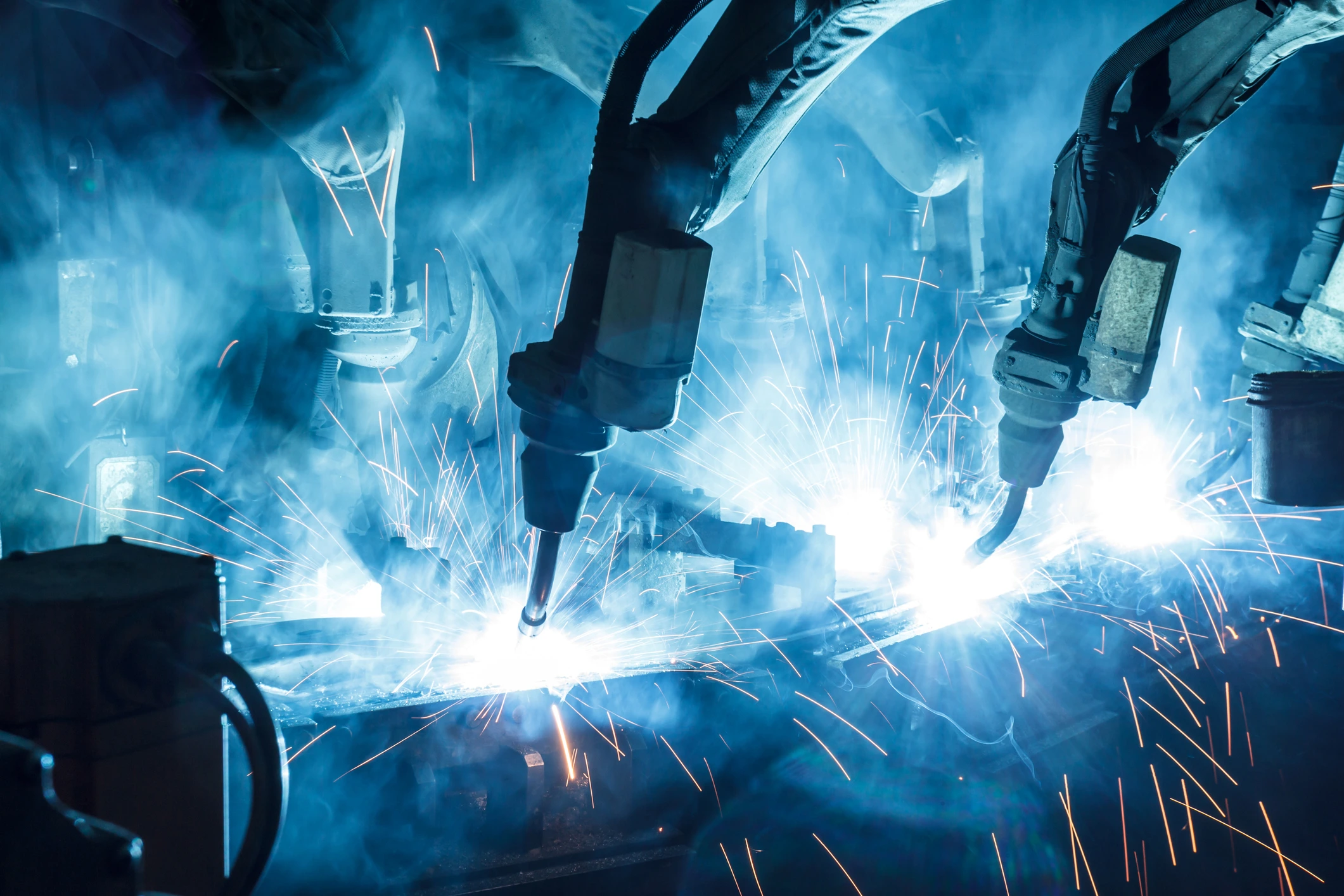Mid-Year Economic Update: Trends and Challenges in Manufacturing and Distribution
As we look to the remainder of 2025, our survey respondents are:
- Predicting a significant increase in workforce investments or upgrades - 38%
- Anticipating a potential expansion into a new facility or plant - 37%
- Planning for capital investments exceeding $1M - 34%
- Planning on entering new states - 28%
- Planning on entering new countries - 24%
Thirty-six percent of survey respondents strongly agree and 45% somewhat agree that their company has budgeting and forecasting plans to manage rising costs in an inflationary environment. Twenty-seven percent have the ability to pass on inflation and inventory supply costs to their customers.

Technology and Automation
Advanced technology is reshaping the landscape of manufacturing and distribution, driving efficiency, innovation, and growth. Many middle-market manufacturers plan to increase investments in automation and advanced technologies with the goal of improving productivity.
In our survey, manufacturing and distribution business leaders noted that:
- AI’s Influence is Growing: 69% of companies say AI had the greatest impact on their business over the past three years, yet only 7% have mature adoption (39% are in the early stages of adoption). This underscores the need for many companies to plan and invest in advanced technologies to remain competitive.
- ERP Upgrades are Common: Two-thirds of respondents have upgraded enterprise resource planning (ERP) systems to better support growth and value creation. As these implementations and upgrades are an immense, expensive undertaking, the number of companies that have committed to investing in these systems highlights their importance in the sector. Over half of surveyed companies link future success to using ERP data for supply chain forecasting or customer data for behavior prediction. Staying competitive in the current market hinges on ERP-driven supply chain prediction (54% of survey respondents) and customer data analytics (52%), making an efficient ERP system a necessary, ongoing investment.
- Cybersecurity Efforts Should Expand: 55% of survey respondents offer cybersecurity awareness training and 47% actively monitor cyber activity. As the use of sophisticated technologies to enhance operations rises, so does the potential for a cyberattack or data breach, necessitating a robust cybersecurity plan and ongoing training efforts.
These trends underscore a broad technological and operational transformation in manufacturing and distribution, where those who adapt proactively — investing in digital, data, and automation tools — are positioned to thrive amid ongoing market volatility and evolving customer expectations.
Reshoring
The pandemic exposed vulnerabilities in global supply chains, highlighting the risks of relying too heavily on overseas production. Disruptions in transportation and logistics created significant delays, which affected the availability of goods and materials. Coupled with newly imposed tariffs under the Trump administration, many manufacturers are looking to reshore.
One of the primary challenges of reshoring is that it is incredibly capital intensive, particularly for a country as wealthy as America. Everything, including labor, is innately more expensive. Part of the requirement to effectively reshore includes investing in infrastructure — producing enough electricity, ensuring road quality, and establishing necessary infrastructure — to support manufacturing and connect markets. Currently, America’s seaports and airports are modern and sophisticated enough to compete with Chinese counterparts.
To remain competitive, companies need to invest in automation and advanced manufacturing technologies to offset labor expenses. Not without challenges, as the demand for “Made in America” products continues to grow, reshoring represents significant opportunities and a promising path forward for many manufacturers and distributors.

Mergers and Acquisitions
Deal activity in the manufacturing and distribution industry started strong in the first quarter, with leading deals including Honeywell’s $2.2 billion acquisition of heat pump maker Sundyne and Siemens’ $10 billion acquisition of Altair Engineering. In the beginning of 2025, it may have been expected for acquisitions to continue to increase with the expectation of lowering interest rates and decreased inflation. However, as interest rates have not dropped significantly, the mergers and acquisitions market has cooled slightly through 2025.
However, given continued pressures on the economy, perpetual uncertainty, and the number of business owners reaching retirement, increased consolidation is likely on the horizon. As family-owned businesses assess their future, many are opting out of the risks associated with running a wholesale distribution business. Operational complexities, evolving customer demands, and the need to adopt and maintain sophisticated technologies to remain competitive are overwhelming for many. Generational turnover will create many opportunities in the near future for acquirers, especially strategic buyers and private equity firms. When interest rates do drop, there will likely be a surge in deal making.
Looking Ahead
The economic outlook for the manufacturing and distribution sector remains highly subject to further policy changes and geopolitical volatility, especially regarding U.S.-China trade tensions and global demand shifts. Despite uncertainty, 75% of companies surveyed expect economic conditions to improve, pointing to tech-driven productivity and supply chain stability.
While aggregate projections are positive, risks on the horizon include potential future inventory adjustments, labor shortages (especially skilled roles), and persistent geopolitical uncertainty which may impact investment and global trade flows. Inflation is poised to stage a comeback, and interest rates will likely remain higher for longer than anticipated, both due in part to tariffs.
Citrin Cooperman’s Manufacturing and Distribution Industry Practice is prepared to help your business navigate uncertain waters to create future value. Our sixth annual survey report highlights how leaders are positioning their businesses for opportunity during uncertainty.
The in-depth analysis highlights key trends shaping the sector, including:
- Strategic supply chain and logistics investments
- Accelerated adoption of artificial intelligence and advanced technologies
- Emerging risks, including tariffs, inflation, and rising costs
- Forward-looking growth strategies, such as M&A and facility expansion
Latest Article Cards

Mid-Year Economic Update: Trends and Challenges in Manufacturing and Distribution
Read More

Investing in Art: A Growing Asset Class
Read More

Unlocking AI’s Potential: Key Takeaways from our Virtual Event
Read More

How AI Is Reshaping Financial Planning and Analysis for Manufacturers and Distributors
Read More



